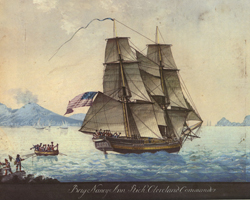Mardi Gras Shipwreck

In May 2007, an archaeological crew from the Departments of Oceanography and Anthropology from Texas A&M University, in cooperation with archaeologists from Minerals Management Service, conducted an excavation on an early 19th-century shipwreck 4016 feet deep in the Gulf of Mexico. This web site will present a series of web site reports on the conservation and analysis of the material recovered from the site.
Mardi Gras Project - Florida Public Archaeology Network Page
Mardi Gras Shipwreck Final Report
Artifacts from the Mardi Gras shipwreck and conservation work conducted at the Conservation Research Laboratory, please visit the following links:
Conservation and Identification of the Mardi Gras Shipwreck Artifacts
The Mardi Gras Shipwreck site contained a wide variety of material culture representing the products of several nations, including Great Britain, France, Mexico, and possibly the United States. Conservation of the artifacts has been ongoing since their recovery from the site, although some artifacts can be analyzed and interpreted at the present time. For ease of discussion, the artifacts have been grouped here largely based on material type.
Ceramic | Glass | Organic | Metal | Composite | Stone
Stern Encrustation
The Mardi Gras Shipwreck site contained a large stern encrustation, which was recovered the from the site and transported to the Conservation Research Laboratory at Texas A&M University. The encrustation is currently undergoing detailed recording, excavation, and conservation. A final analysis of the artifacts associated with the encrustation is not yet complete, but some artifacts, such as a brush, lead sounding weight and wicker basket, have been identified within the concretion.
Stern Encrustation - Recovery, Transportation and Conservation
Ongoing Conservation of the Artifacts and Encrustation
Contract Services
The CRL works with a variety of academic institutions, museums, historical societies, government offices, and private individuals. Our goal is to create viable conservation strategies of the highest standard that can be accomplished at minimal cost. For more information, visit our services page.
Support
Monetary donations and volunteer workers are vital to the ongoing success of the Conservation Research Laboratory. If you would like to volunteer your time and expertise, please write us here. If you would like to become one of our donors, please click the link below and direct your gift to: Center for Maritime Archaeology and Conservation.
